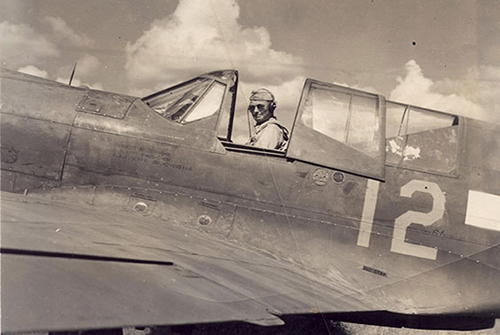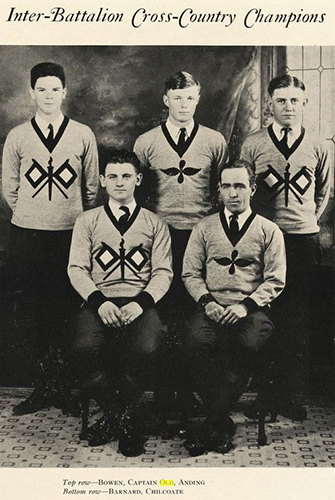 Maj. Gen. William D. Old ’24 received some of the most difficult assignments of World War II, such as when he piloted the first transport flight in 1942 across The Hump, which was the nickname for the airlift route across the Himalayan foothills into China.
Maj. Gen. William D. Old ’24 received some of the most difficult assignments of World War II, such as when he piloted the first transport flight in 1942 across The Hump, which was the nickname for the airlift route across the Himalayan foothills into China.
The steely determination of the late Maj. Gen. William D. Old ’24 is well-documented.
His grit was initially noted when he competed for Texas A&M University’s cross country and track and field teams. The 1924 yearbook proclaimed that, "he is a fighter from the time the gun is fired until the tape is broken, and every opponent knows that the little man is hard to beat.”
That resolve served him well during his military service. “My grandmother said she never saw him as a colonel because he advanced so quickly,” said his grandson, Judge William “Bill” D. Old III. “He spent 13 years as a lieutenant and a captain and 13 years as a general, and only three years in between.”
Texas A&M’s role in Maj. Gen. Old’s stellar military career and his descendants’ continued commitment to the university is why the general’s daughter, Sally Old Houdayer, established two General Rudder Corps Scholarships in honor of her father through a bequest in her will. “My husband was very astute in investing, and he suggested that we do a scholarship when it came time to assign available funds,” Houdayer said.
A bequest is one of the easiest ways to create a planned gift through the Texas A&M Foundation. This type of gift allows donors to retain assets during their lifetimes while also lessening the burden of estate taxes. A bequest can be made through a gift of a percentage of the estate, a specific asset (such as property) or a gift from the estate’s balance.
 Maj. Gen. Old (back row, middle) competed for Texas A&M University’s cross country and track and field teams. Image shown is from the 1924 yearbook.
Maj. Gen. Old (back row, middle) competed for Texas A&M University’s cross country and track and field teams. Image shown is from the 1924 yearbook.
The Hump and the Cold War
Maj. Gen. Old, who was the captain of the First Flight Air Service in the Corps of Cadets,had many notable assignments during his military career, including flying Vice President John Nance Garner from Uvalde to Washington, D.C., at President Franklin Roosevelt’s request and participating in mercy flights to Santiago, Chile, after its 1939 earthquake.
However, his legendary resolve was especially needed when Maj. Gen. Old received some of the most difficult assignments of World War II. In 1942, he piloted the first transport flight across The Hump, which was the nickname for the airlift route across the Himalayan foothills into China. The Hump was very dangerous due to jetstream-strength winds and dangerous weather at extreme altitudes. More than 1,000 men and 600 planes were lost over this 530-mile stretch. Maj. Gen. Old’s first mission across The Hump was designed to supply aviation fuel to Lt. Col. Jimmy Doolittle and his Raiders after they made their famous mission, the first air raid on the Japanese mainland in 1942. “He was certainly an accomplished pilot,” said Houdayer. “When they flew The Hump, they had no radio and no radar. It was literally flying by the seat of their pants.”
Maj. Gen. Old also flew numerous other difficult war missions, including supporting Merrill’s Marauders as they fought behind Japanese lines in Burma. Eventually, he returned to the United States to join the Troop Carrier Command and help plan the invasion of Japan, which was scheduled for 1945. In that role, he would have helped command operations to transport troops and supplies into mainland Japan; however, the bombing of Hiroshima and Nagasaki negated those plans.
After the war’s end, Maj. Gen. Old led the 9th Air Force in South Carolina before assuming command of the Alaska Air Command. In that assignment, he oversaw the establishment of early warning radar stations on ice islands between Alaska and Russia to alert the United States of any Soviet aggression. His final assignment was at Sheppard Air Force Base in Wichita Falls. He moved to San Antonio after his retirement in 1954 and died in 1965. He is buried at Fort Sam Houston.